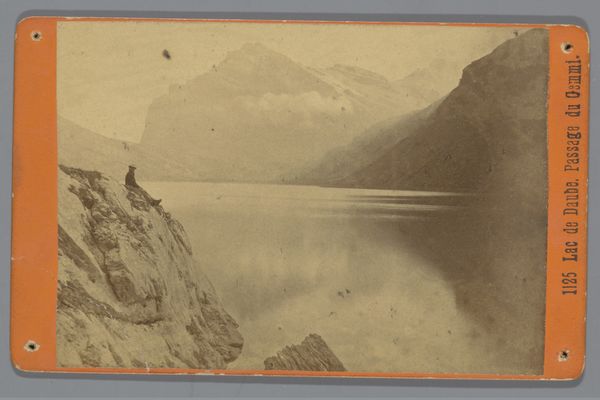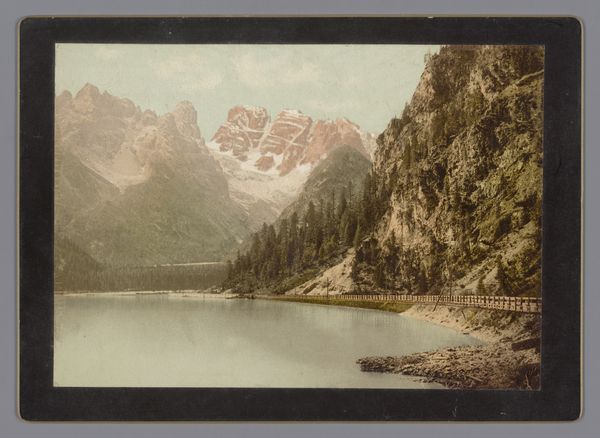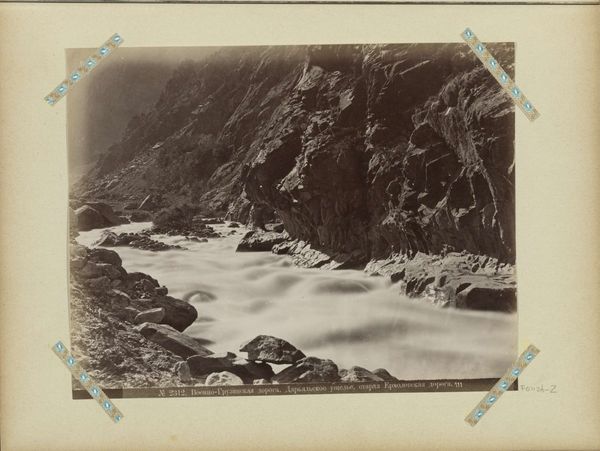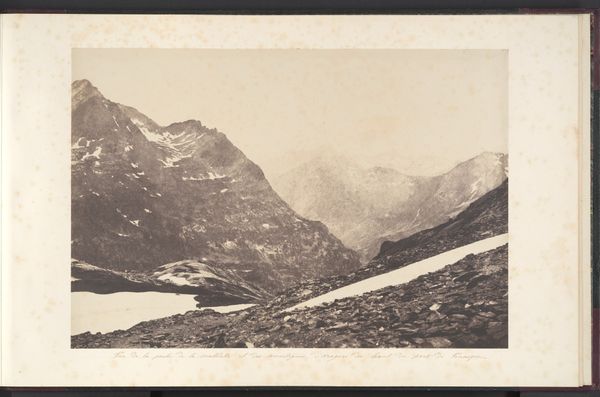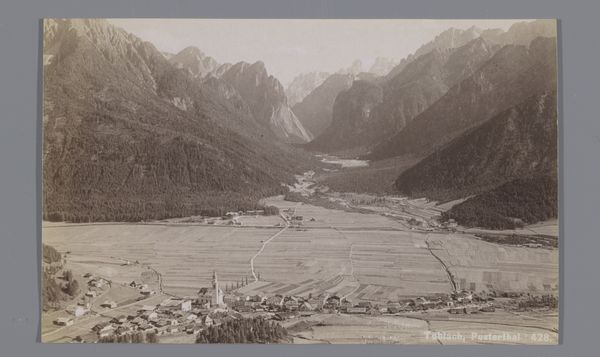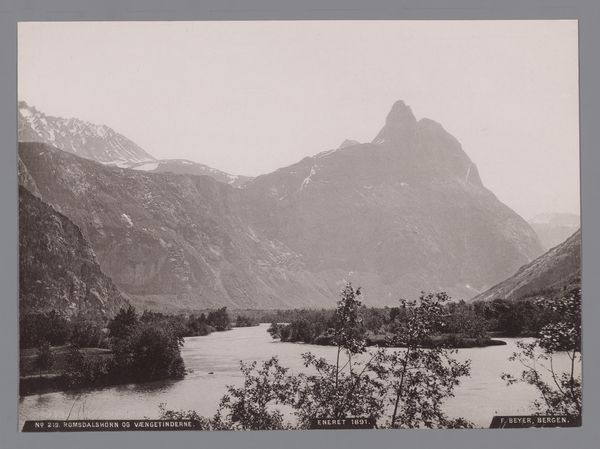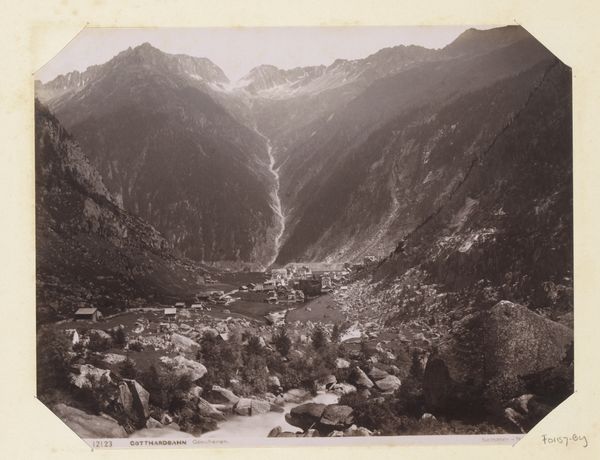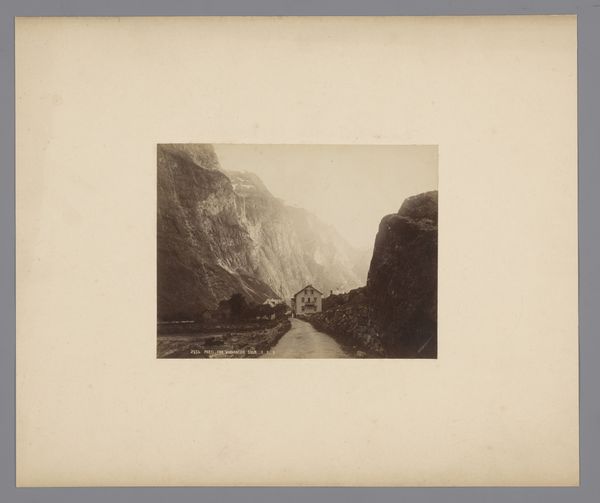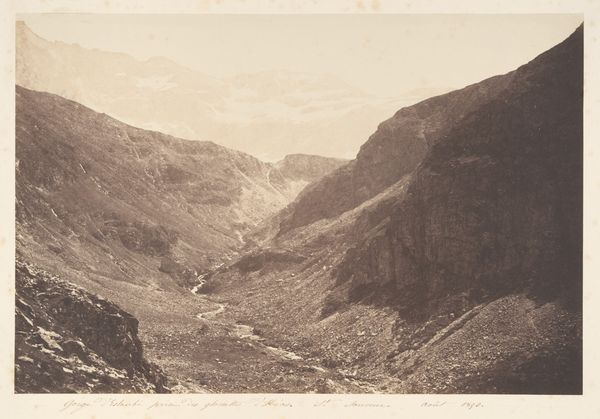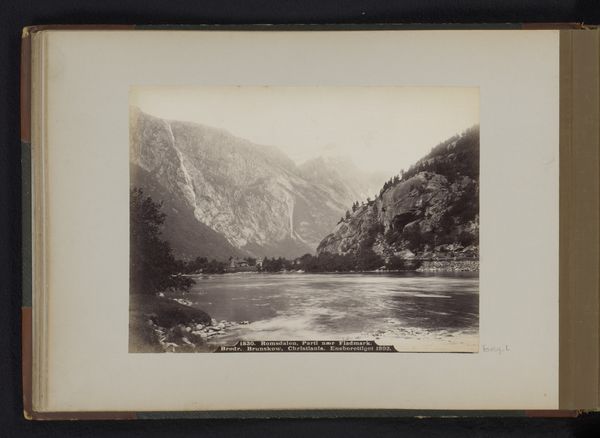
photography, gelatin-silver-print
#
landscape
#
photography
#
gelatin-silver-print
#
realism
Dimensions: height 62 mm, width 101 mm
Copyright: Rijks Museum: Open Domain
Curator: Today we are examining “Gezicht op de Schilthorn,” or “View of the Schilthorn,” a gelatin silver print captured by Arthur Gabler sometime between 1873 and 1888. Editor: It has a muted palette that evokes a strange sense of melancholic stillness. The light almost seems to be trapped, or maybe just politely held in check. It makes the scale of the place feel more grand, and a bit haunting too. Curator: Yes, note the almost photographic precision of detail. Gabler utilizes the full tonal range afforded by the gelatin silver process to articulate form and texture, drawing the eye along a compositional path guided by linear perspective and careful massing of light and shadow. Editor: Massing, mmhmm. What's most interesting to me is how nature’s grandeur is balanced by the human need to perceive it. There's an inherent imposition in deciding what slice of nature to show. Like holding a conch shell to your ear, we want a distillation. Curator: Quite so. And here we see the artist, or photographer, carefully structuring that "distillation," you might say, employing the logic of realism to translate lived experience into an idealized representation of the natural world. Editor: But even this ideal is interesting. He focuses not on romantic wildness, but an empty desolation. Like the valley after some grand battle of the gods. Curator: An insightful reading. Perhaps the barrenness reflects a wider 19th-century obsession with capturing not just the landscape, but the very essence of sublimity—of something ineffable, beyond the frame, looming out of view. Editor: Which the lack of color enhances perfectly. Maybe Gabler knew what he was doing. By stripping away color he could lead our mind on a flight beyond mere nature, to that ineffable beyond. Curator: One could convincingly argue that such "stripping away," as you so eloquently put it, intensifies our perception and cognitive grasp. I think a sustained engagement with this work ultimately provokes compelling questions about representation itself. Editor: Well, from my point of view, the artwork’s evocative hollowness is a pretty fair argument to give nature its wild spaces, so that people can project their imaginations to their hearts' content.
Comments
No comments
Be the first to comment and join the conversation on the ultimate creative platform.


